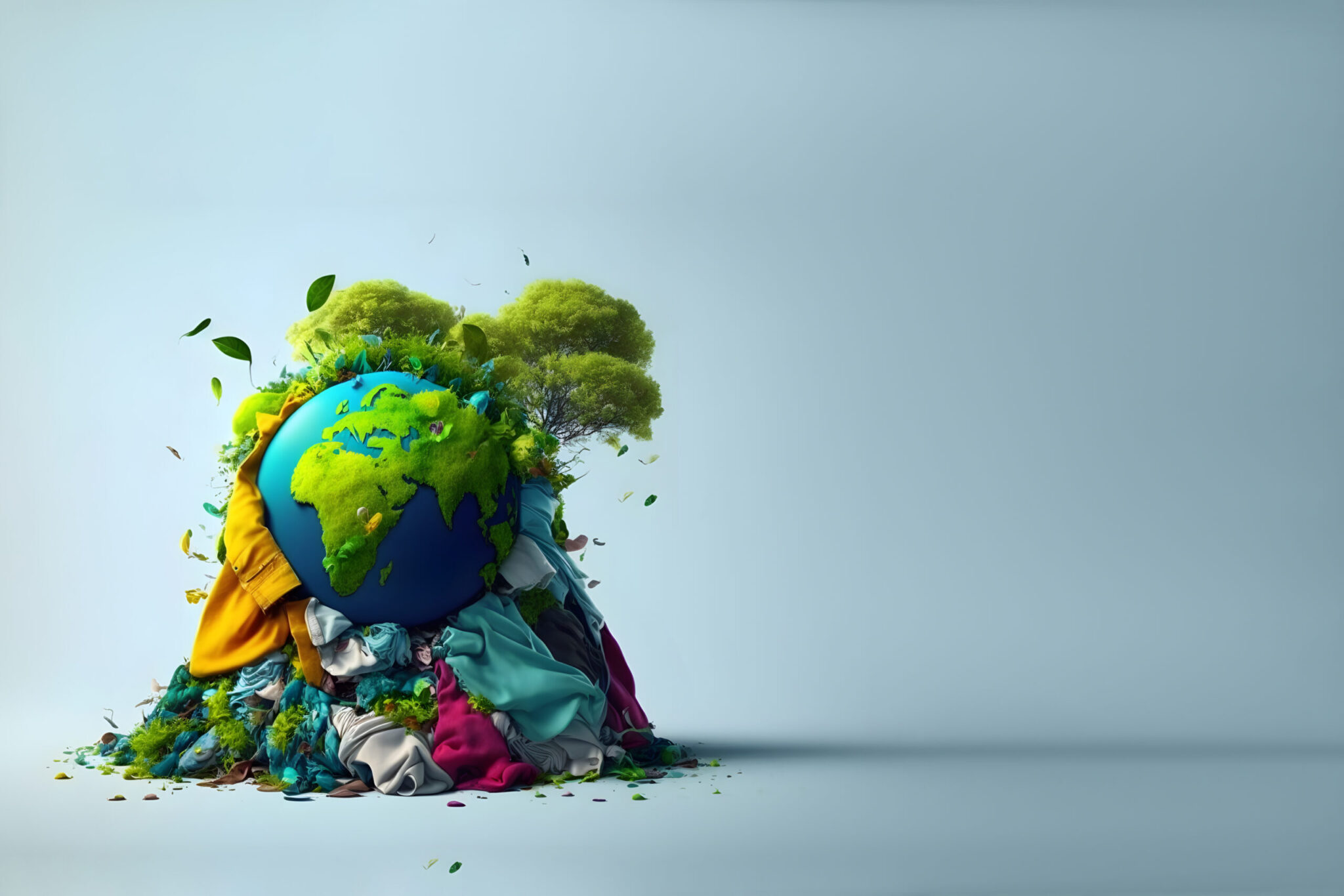Natural fibers, such as wool, silk, linen, cotton, and hemp, coexist in the textile industry with artificial fibers. The most popular synthetic fibers, such as polyamide and acrylic, are manufactured from petrochemicals. The majority of the clothing in our closets is made of Lycra, polyester, or elastane, as these affordable and low-maintenance fibers are emerging as, the magic bullet for the textile sector. However, they are difficult to recycle, and their production contributes to pollution, with nylon taking 30 to 40 years to decompose.
The raw materials and production methods used in the textile and apparel business vary, and the negative effects on the environment are numerous and diverse at each of the six steps that are normally needed to manufacture a garment. There are various harmful effects on the ecosystem, such as air pollution from spinning, weaving, and industrial manufacturing. Large amounts of water and chemicals are used in dyeing and printing, and many volatile substances that are particularly dangerous to human health are also released into the atmosphere.
In the world’s fashion capitals, willowy models parade down the catwalk several times a year to display the trends for the upcoming season. A select group of designers chooses the trends and determines what’s in and out each year. Then, chain stores and big box stores modify their designs for the average person on the street. Fashion is the world’s second-largest economic activity after textiles and apparel, but the intense competition drives costs down, sometimes at the expense of working conditions in developing nations. Additionally, the environment bears a high price. Textile producers, manufacturers, and distributors are initiating the first efforts based on sustainable development to improve working conditions and reduce pollution, as ecology might be the next big thing!
Although the fashion industry may be chic, fashionable, and thrilling, its environmental effects worsen daily.
Revolutionizing Fashion the Sustainable Potential of Recycled Garments
Based on proprietary technologies, the EU-funded New Cotton project has developed a groundbreaking approach to address these challenges. The core idea is to promote circularity in the textile sector by converting textile waste into premium cotton-like fibers.
Textile waste recycling will be mandated in the EU by 2025. The project’s coordinator, the Finland-based Infinite Fiber Company, has unveiled a patented process for transforming end-of-life textiles into premium fibers that can be used to create clothing for the entire fashion industry, ranging from high-street to high-end fashion. The company has developed InfinnaTM textile fiber, also known as cellulose carbamate fiber, which closely resembles cotton in appearance and texture. Infinite Fiber Company’s textile fiber regeneration technology regenerates textile waste over a three-year period into a new, synthetic cellulosic fiber that emulates cotton, known as “new cotton.” These fibers will be utilized to create a range of textiles for clothing that will be manufactured and sold by the H&M Group and the global brand Adidas. The project also aims to serve as a model and a catalyst for future, larger circular projects in the textile industry.






